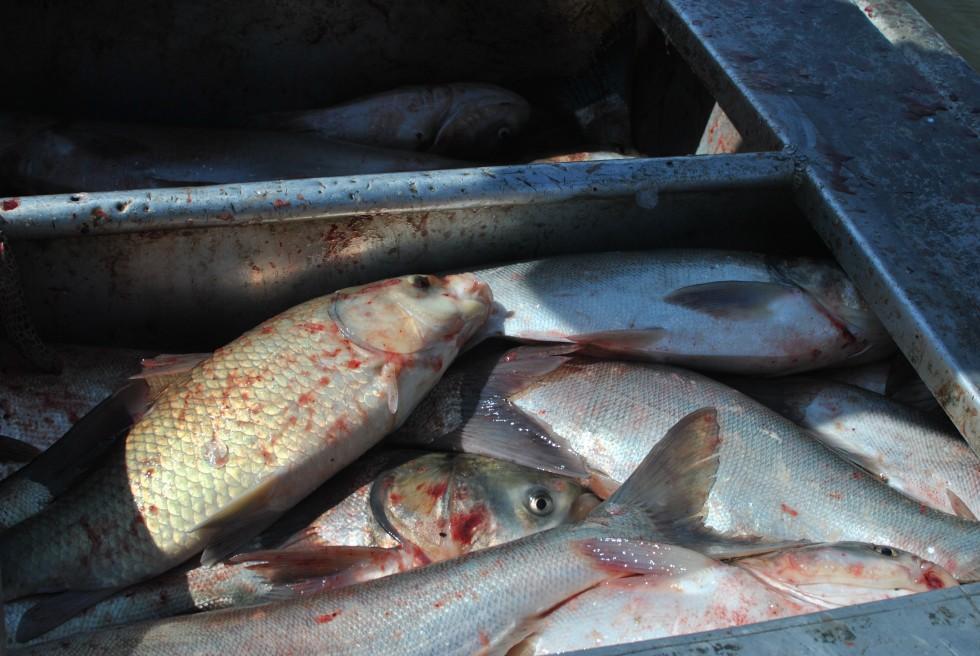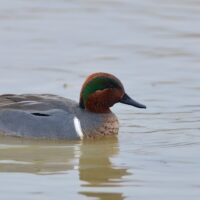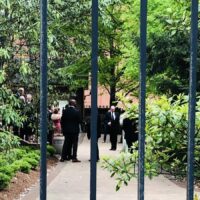Federal and state officials this week will begin testing a new, experimental method to harvest invasive Asian Carp out of Kentucky Lake.

Ron Brooks is the Aquatic Nuisance Species Program Director for the Kentucky Department of Fish and Wildlife Resources, and helps coordinate efforts to combat Asian Carp. He said the “Modified Unified Method” originates from large nets fishermen in China have used to catch carp.
The nets are modified to have tighter meshes so that less carp can escape, and are combined with electrofishing equipment and underwater speakers to corral the fish.
“They found two effective sounds that really cause the fish to move out. One of them, the U.S.G.S. figured out several years ago is just an amplified boat motor noise,” Brooks said. “The other one that they started using is the sound of industrial elevators, when the two doors come together and they make that metallic slamming noise.
They figured out if they use that noise and repeat it rapidly, that also does a good job of scaring the fish.”
Officials from the U.S. Geological Survey, U.S. Fish and Wildlife Service, U.S. Forest Service and the Tennessee Valley Authority will test the method in Smith and Pisgah bays on Kentucky Lake through Feb. 20. Brooks said officials will focus intensive efforts for three or four days on a specific bay to corral the fish and then move on to the next bay. The method has previously been tested in Missouri and Illinois.
“If we can add another aspect to the removal, then I really do think we’re going to come to a point where we’re going to start seeing fewer and fewer fish in those systems,” Brooks said. “They can’t reproduce in there, and we’re starting to block (Asian Carp) off as well with the bioacoustical fish fence.”
The BioAcoustic fish fence was installed on Lake Barkley in October to prevent Asian Carp from moving from the Cumberland River into the lake. The fence is being tested over three years.
“I hope by summer that things are even better on these lakes so that we can start talking tourism up and telling people ‘look, it’s time to come by to these lakes,’” said Wade White, Lyon County Judge-Executive and founder of the advocacy group War On Carp. “The carp are getting thinner, we’re getting out lakes back.”
White said he believes the $25 million in federal funding announced last year to combat Asian Carp in the southeastern U.S. will be a boost for these various efforts.
(This story first ran on WKMS, the public radio station at Murray State University.)
Liam Niemeyer is a reporter for the Ohio Valley Resource covering agriculture and infrastructure in Ohio, Kentucky and West Virginia and also serves Assistant News Director at WKMS. He has reported for public radio stations across the country from Appalachia to Alaska, most recently as a reporter for WOUB Public Media in Athens, Ohio. He is a recent alumnus of Ohio University and enjoys playing tenor saxophone in various jazz groups.






